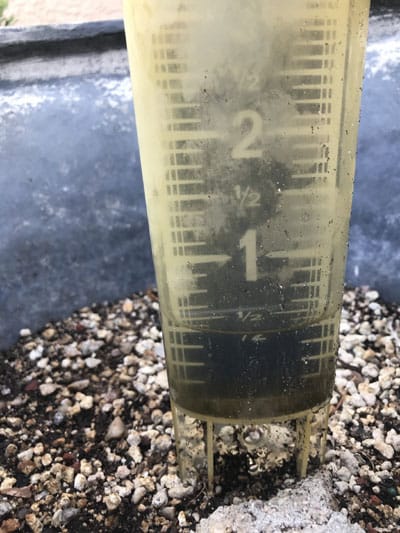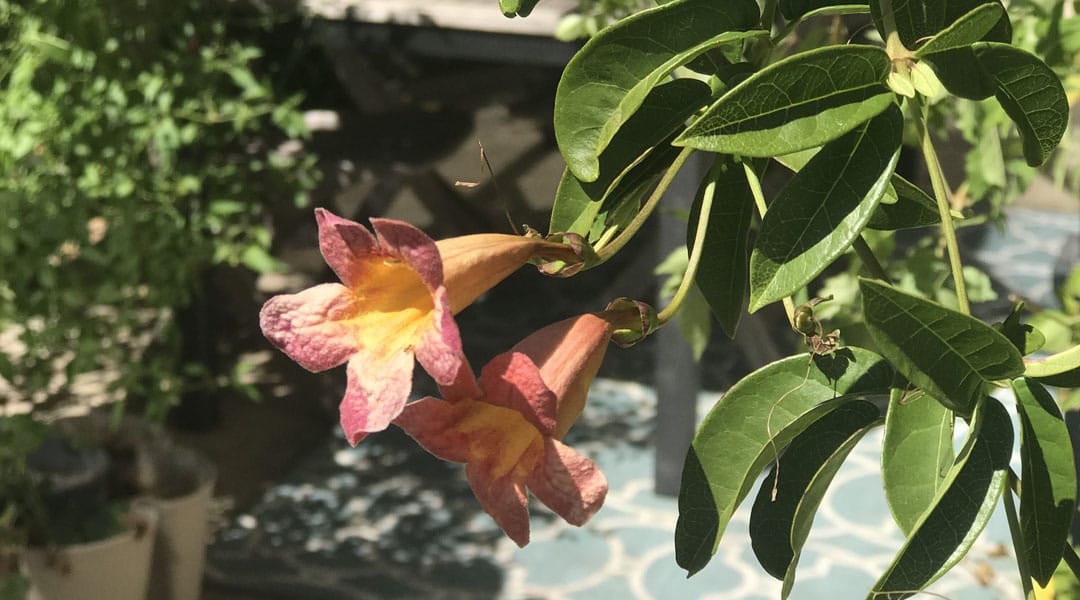What to do in Your Tucson-Area Yard in September
It’s September! Here are some things to work on in your yard and garden this month.
The days are still hot, but the mornings and evenings should begin to cool during the month of September, making it slightly more bearable to be outdoors.
Planting
September is a big planting month, both for gardens and yards. Trees are best planted in the fall, and seeds for your winter garden can be sown in the garden directly or started indoors.
It’s also better to add landscape plants in the fall, when temperatures have moderated but the soil is still warm. Check our Tucson Plants page for ideas on what to plant (and what to avoid!). Local garden centers and nurseries will also be able to help you with suggestions, and many can also order specific plants for you.
A good rule of thumb is to wait until daytime temperatures remain below 100 degrees Fahrenheit before planting any cool-season annuals. Good early season annuals to plant in September include million bells, dianthus, petunias, angelonia, and cosmos.
Local garden centers will start selling spring-blooming bulbs later in the month. Be on the lookout for anemone, bearded iris, Dutch iris, daffodils and paperwhites, hyacinths (make sure they’re pre-chilled), ranunculus, and tulips (these need to be chilled for 4 to 6 weeks before planting). Choose carefully – you want good-sized bulbs with no soft spots (pass on undersized bulbs, even if they’re cheaper).
Tucson has a few tree planting programs if you’re looking for reduced prices on shade trees to plant.
- TEP Trees for You Program
- TRICO customers: Trees for Tucson
Read more about why trees are beneficial for Tucson in this post.

Watering
As during the previous summer months, base your watering on the amount of rainfall you actually receive. Most vegetable gardens will need more than just rainfall to survive this warmer time of year. Depending on how much rain your yard receives, some plants and young trees may need supplemental watering (such as from a drip system) as well.
Adjust irrigation frequency as appropriate based on rainfall this month. Use a rain gauge to see how much rainfall your property received – a good rule of thumb is to turn off or delay your watering system if you measure .5 inches of rain or more. But first, check to see how deeply water penetrated the soil; if most of the water ran off your property, even an inch or more won’t have made much difference.
Fertilization
Lawns
If you have a lawn in your Tucson yard, one more feeding before fall can be helpful. Overseeding bermudagrass lawns with a cool-season grass (usually, that’s annual or perennial ryegrass) is best done once daytime temperatures are in the 90s and nighttime temperatures are in the 60s – typically toward the end of September.
Trees
The third of the three annual fertilization applications for citrus trees is around Labor Day. Check this citrus fertilization chart from the U of A Cooperative Extension to see how much fertilizer to apply.
Stone fruit trees (such as peach, apricot, and plum) can benefit from fertilizer this month as well.
Plants
Plants can be lightly fertilized to help them recover from the heat and drought of summer.
Roses can also be lightly fertilized during September with a time-release or organic fertilizer (wait until October for more aggressive fertilization with quick-release liquid fertilizers).
Sow or Transplant Herbs or Vegetables
On or around September 1
Plant these from seed
- Broccoli
- Broccoli Raab
- Brussels sprouts
- Cabbage
- Carrots
- Cauliflower
- Celery
- Chia
- Chicory
- Chinese Cabbage
- Cilantro
- Collards
- Corn
- Escarole
- Fava
- Garbanzo
- Greens
- Kale
- Kohlrabi
- Leek
- Lentils
- Mustard
- Pea
- Radish
Transplant these as seedlings
- Broccoli
- Brussels Sprouts
- Cabbage
- Chinese Cabbage
- Cauliflower
- Celery
- Cilantro
- Dill
- Fennel
- Kale
- Lettuce
- Mustard
- Parsley
- Spinach
- Swiss Chard
On or around September 15
Plant these from seed
- Beets
- Broccoli
- Broccoli Raab
- Brussels Sprouts
- Cabbage
- Cauliflower
- Carrots
- Collards
- Kale
- Kohlrabi
- Parsnip
- Radish
- Rutabega
- Swiss Chard
- Turnip
Transplant these as seedlings
- Swiss chard
- Mint
- Oregano
- Rosemary
- Sage
- Tarragon (French)
- Thyme

Pests to Check For in September
The cooler evening and morning weather means that many pests will return.
Look for yellowing leaves and spiderweb-like threads from spider mites. The best defense is to spray the spider mites (and their webs) off leaves with a garden hose once a week. You can spray them off with a high-pressure garden hose, prune off really infested areas, or treat with neem oil. Often times this needs to be repeated as they can easily make their way back.
Yellow bells, bougainvillea, and tecoma plants can become infested with small caterpillars. You can spray them off with a hose or use neem oil.
As the weather cools, it’s a good time to treat your agaves for agave snout-nosed weevils. If you notice the lower leaves on your agave drooping while the center stays upright, there’s a good chance that it’s infested. Give the plant a push – if it rocks back and forth, the roots have begun to rot and the plant should be removed. Spring and fall are the only times of year that you can effectively prevent infestation. You can find more details on prevention and treatment here.
Other things to do in September
- If any of the citrus fruit on your trees has split, discard the fruit as this can attract pests.
- Prune dead and dying branches off plants.
- Adjust shade cloth and container plants as the sun shifts.
- Continue to pull weeds that sprout after rainfall.
- Don’t do any major pruning just yet; wait until shrubs and trees are dormant in January or February. A little light pruning if needed is fine but don’t overdo it.
We hope these tips help you enjoy your Tucson-area yard and garden this month! Have fun!